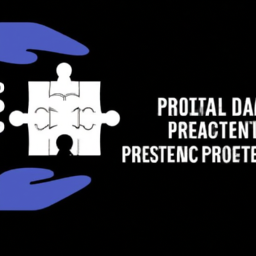How Does GDPR Or Other Data Protection Regulations Impact Our Continuity Planning?
In today’s digital age, where the handling and storage of sensitive personal data are of paramount concern, it is crucial for organizations to not only comply with data protection regulations but also ensure the seamless continuation of their operations. The General Data Protection Regulation (GDPR) and other similar regulations have a profound impact on our continuity planning, as they dictate how we collect, use, and safeguard personal information. Understanding the ramifications of these regulations is essential in developing effective strategies to protect our customers’ data, maintain trust, and ensure the uninterrupted flow of business processes.
Data Protection Regulations: An Overview
In today’s digital age, data protection regulations play a crucial role in safeguarding individuals’ personal information. One of the most prominent data protection regulations is the General Data Protection Regulation (GDPR), which was implemented by the European Union (EU) in May 2018. GDPR sets out strict guidelines and rules for how organizations handle and protect personal data. This article provides a comprehensive overview of GDPR and explores its impact on continuity planning.
Understanding GDPR
What is GDPR?
GDPR is a comprehensive data protection regulation that aims to protect the privacy and personal information of individuals within the EU. It applies to any organization, regardless of its location, that processes the personal data of EU citizens. Personal data includes any information that can identify an individual, such as their name, address, contact details, or even online identifiers like IP addresses.
Key Principles of GDPR
GDPR is built upon several key principles that organizations must adhere to when processing personal data. These principles include:
-
Lawfulness, fairness, and transparency: Organizations must process personal data lawfully, fairly, and in a transparent manner.
-
Purpose limitation: Personal data must be collected for specified, explicit, and legitimate purposes. It should not be further processed in a way that is incompatible with these purposes.
-
Data minimization: Organizations should only collect and retain personal data that is necessary for the intended purpose.
-
Accuracy: Personal data must be accurate, kept up to date, and rectified if necessary.
-
Storage limitation: Personal data should be retained for no longer than is necessary for the intended purpose.
-
Integrity and confidentiality: Organizations must ensure the security and confidentiality of personal data.
-
Accountability: Organizations are responsible for demonstrating compliance with GDPR and must implement appropriate measures to protect personal data.
Scope of GDPR
GDPR has an extensive scope, affecting organizations both within and outside the EU. It applies to any organization that processes personal data of EU citizens, regardless of whether the processing takes place within the EU or not. This means that even businesses operating outside the EU must comply with GDPR if they handle the personal data of EU residents.
Importance of Continuity Planning
Continuity planning refers to the process of preparing and organizing activities to ensure the continued operation of critical business functions in the face of disruptions or disasters. It involves anticipating potential risks and developing strategies to minimize their impact and enable the organization to recover quickly. Continuity planning is essential for any organization to mitigate the potential loss of data, revenue, and reputation.
Impact of GDPR on Continuity Planning
Enhanced Data Security
GDPR places a strong emphasis on data security, requiring organizations to implement appropriate technical and organizational measures to protect personal data. This includes measures such as encryption, access controls, regular data backups, and vulnerability assessments. By implementing these security measures, organizations can significantly enhance their data protection practices, reducing the risk of data breaches and unauthorized access.
Data Breach Notification
Under GDPR, organizations are required to promptly notify the relevant supervisory authority and affected individuals in the event of a personal data breach. This requirement ensures that individuals are informed about any potential risks to their personal data, allowing them to take necessary precautions. Incorporating data breach notification processes into continuity plans enables organizations to respond effectively and efficiently in the event of a breach, minimizing the potential impact on both individuals and the business.
Data Processing Agreements
GDPR requires organizations to have written agreements in place with any third parties involved in processing personal data on their behalf. These agreements establish the responsibilities and obligations of each party, ensuring that personal data is processed in a lawful and secure manner. By including data processing agreements in continuity plans, organizations can ensure that their data is protected even when it is being processed by external entities.
Consent and Legitimate Interest
GDPR introduces stricter requirements for obtaining consent from individuals to process their personal data. It also recognizes legitimate interest as a legal basis for processing personal data under certain circumstances. Continuity plans should take these requirements into account and ensure that appropriate mechanisms are in place to obtain valid consent and assess the legitimate interest when processing personal data.
Data Minimization and Retention
GDPR encourages organizations to collect and retain only the personal data that is necessary for the intended purpose. Continuity plans should incorporate strategies for minimizing the collection and retention of personal data, reducing the risk of data breaches and unauthorized access. Additionally, plans should outline the appropriate retention periods for personal data, ensuring compliance with GDPR’s storage limitation principle.
Data Subject Rights
GDPR grants individuals various rights regarding the processing of their personal data, including the right to access, rectify, and erase their data. Continuity plans should detail the processes and procedures for handling data subject requests, ensuring that individuals can exercise their rights effectively. By being prepared to address these requests, organizations can demonstrate their commitment to data protection and compliance with GDPR.
Key Considerations for GDPR Compliance and Continuity Planning
To achieve GDPR compliance and ensure effective continuity planning, organizations should focus on the following considerations:
Data Mapping and Inventory
A crucial step in GDPR compliance is understanding what personal data is being processed, where it is stored, and who has access to it. Data mapping and inventory involves identifying the categories of personal data, the purposes for processing, the legal basis for processing, and the associated risks. This information helps organizations identify vulnerabilities and implement appropriate protective measures in their continuity plans.
Data Protection Impact Assessments (DPIAs)
DPIAs are a systematic process to evaluate the potential impact of data processing activities on individuals’ privacy rights and identify measures to mitigate any risks. Conducting DPIAs helps organizations identify and address privacy risks proactively, ensuring that privacy considerations are an integral part of their continuity plans.
Risk Assessment and Mitigation
Continuity planning requires organizations to identify and assess both internal and external risks that may impact their operations. Integrating GDPR compliance into risk assessment processes ensures that data protection risks are adequately considered. This includes assessing risks related to data breaches, non-compliance with GDPR requirements, or unauthorized data access.
Training and Awareness
Employees play a crucial role in ensuring GDPR compliance and effective continuity planning. Providing comprehensive training programs and raising awareness about data protection best practices helps employees understand their responsibilities and empowers them to protect personal data. Training should cover topics such as data handling, security measures, incident reporting procedures, and compliance requirements outlined in organizational continuity plans.
Incident Response and Recovery
Despite implementing robust measures, organizations may still experience data breaches or other security incidents. Continuity plans should specify detailed incident response and recovery procedures to ensure a timely and efficient response to incidents. This includes identifying key contacts, defining communication channels, and outlining the steps to contain, investigate, and recover from security incidents.
Other Data Protection Regulations
GDPR is not the only data protection regulation that organizations need to consider when developing continuity plans. Depending on the nature and extent of an organization’s operations, there may be additional data protection regulations that apply. It is important to understand the similarities and differences between GDPR and other regulations to ensure comprehensive compliance and effective continuity planning.
Comparison with GDPR
While GDPR is considered one of the most comprehensive data protection regulations, there are other regulations that organizations may need to comply with depending on their geographical location or industry. For example, organizations operating in the United States may need to comply with the California Consumer Privacy Act (CCPA), which provides additional rights and protections for California residents’ personal information. Understanding the requirements of these regulations allows organizations to align their continuity plans and ensure compliance with multiple regulatory frameworks.
Implications for Continuity Planning
Each data protection regulation may have specific implications for continuity planning, depending on its requirements and objectives. Organizations need to assess the impact of these regulations on their continuity plans and make necessary adjustments to ensure compliance. This may include incorporating additional security measures, updating data breach response processes, or adjusting data retention and erasure practices.
Global Data Protection Laws
Overview of Global Data Protection Laws
While GDPR is one of the most well-known data protection regulations, countries around the world have implemented their own data protection laws to protect individuals’ privacy rights. It is essential for organizations to understand the global landscape of data protection laws and consider their applicability to their operations. Some notable data protection laws include the Personal Information Protection and Electronic Documents Act (PIPEDA) in Canada, the Personal Data Protection Act (PDPA) in Singapore, and the General Data Protection Law (LGPD) in Brazil.
International Data Transfers
With the increasing globalization of businesses, the transfer of personal data across borders has become common. However, international data transfers must comply with applicable data protection regulations. GDPR, for instance, imposes specific requirements on transferring personal data outside the EU. Organizations must ensure that appropriate safeguards are in place, such as EU Standard Contractual Clauses or Binding Corporate Rules, to protect the personal data during international transfers. Continuity plans should address the requirements and considerations related to international data transfers to maintain compliance.
Implications for Continuity Planning
Global data protection laws may introduce additional complexities and requirements for continuity planning, especially for organizations operating across multiple jurisdictions. It is crucial to understand the specific provisions of each country’s data protection laws and identify any gaps or overlaps with existing continuity plans. By aligning continuity plans with global data protection laws, organizations can maintain compliance and ensure uninterrupted business operations.
Tools and Technologies for Compliance and Continuity Planning
Implementing the right tools and technologies can greatly facilitate GDPR compliance and enhance continuity planning efforts. Here are some key tools and technologies that organizations can leverage:
Data Encryption and Pseudonymization
Data encryption and pseudonymization techniques can significantly improve data security and privacy. Encryption ensures that personal data is transformed into an unreadable format, protecting it from unauthorized access. Pseudonymization involves replacing identifiable information with artificial identifiers, further enhancing privacy. Including encryption and pseudonymization technologies in continuity plans helps organizations maintain compliance with GDPR’s data security requirements.
Data Security Measures
Various data security measures can help safeguard personal data. These measures include access controls, firewalls, intrusion detection systems, and regular security assessments. Continuity plans should outline the specific data security measures to be implemented, considering the nature and sensitivity of the personal data being processed.
Privacy Impact Assessment Tools
Privacy impact assessments (PIAs) are valuable tools for evaluating and addressing privacy risks associated with data processing activities. There are numerous PIA tools available that enable organizations to systematically assess privacy risks, identify potential impact areas, and establish appropriate mitigation measures. Incorporating PIA tools into continuity plans allows organizations to maintain an ongoing assessment of privacy risks and ensure compliance with GDPR’s accountability principle.
Challenges and Risks
While data protection regulations, such as GDPR, offer significant benefits, they also pose challenges and risks for organizations in terms of continuity planning. It is essential to consider these challenges and manage them effectively to ensure continuous compliance and business operations.
Compliance Costs
GDPR compliance can involve significant costs for organizations, especially small and medium-sized enterprises (SMEs). Implementing technical and organizational measures, conducting audits, and training employees require financial investment. Continuity plans should consider the financial implications of GDPR compliance and identify cost-effective strategies to mitigate compliance costs.
Managing Consent and Privacy Preferences
Obtaining valid consent for processing personal data and managing privacy preferences can be complex, especially when dealing with a large customer base. Continuity plans should include mechanisms to effectively manage consent and privacy preferences, ensuring that individuals can exercise their rights and control how their data is processed. This may involve implementing user-friendly consent management systems and providing clear and accessible privacy information to individuals.
Third-Party Compliance
Organizations often rely on third-party service providers for various business functions. Ensuring that these third parties also comply with GDPR requirements can be challenging. Continuity plans should address third-party compliance by including data processing agreements, conducting due diligence on service providers, and implementing monitoring mechanisms to ensure ongoing compliance.
Emerging Technologies and Compliance Challenges
Advancements in technology, such as artificial intelligence and machine learning, present both opportunities and compliance challenges. These technologies often involve processing large amounts of data, raising concerns about data protection and privacy. Continuity plans should consider the potential implications of emerging technologies and define the necessary measures and controls to ensure compliance as new technologies are adopted.
Benefits of Data Protection Regulations for Continuity Planning
While GDPR and other data protection regulations pose challenges, they also offer numerous benefits for continuity planning. Embracing data protection regulations can positively impact an organization’s data management practices and overall operational resilience.
Improved Data Security and Privacy
With the increasing frequency and sophistication of cyberattacks and data breaches, ensuring data security and privacy is paramount. GDPR’s emphasis on robust data security measures and privacy principles enhances an organization’s ability to protect personal data. By incorporating these measures into continuity plans, organizations can strengthen their overall data protection practices, minimizing the risk of data breaches and unauthorized access.
Enhanced Customer Trust and Reputation
Data protection regulations, such as GDPR, emphasize transparency, accountability, and respect for individuals’ privacy rights. Demonstrating compliance with these regulations builds customer trust and fosters a positive reputation. Continuity plans that prioritize data protection and compliance empower organizations to assure their customers that their personal data is handled with care and confidentiality.
Streamlined Data Management Processes
GDPR’s principles of data minimization, purpose limitation, and storage limitation promote efficient and effective data management practices. By aligning continuity plans with these principles, organizations can streamline their data management processes, reducing unnecessary data collection and retention. This not only improves data accuracy and accessibility but also enables organizations to respond more efficiently during disruptions or disasters.
In conclusion, data protection regulations, such as GDPR, have a significant impact on continuity planning. Understanding the key principles and provisions of these regulations is essential for organizations to develop comprehensive continuity plans that align with compliance requirements. By addressing the implications of data protection regulations and leveraging appropriate tools and technologies, organizations can enhance data security, preserve customer trust, and foster resilient business operations. Continuity planning should be viewed as an integral part of overall data protection efforts, ensuring the continued availability, integrity, and confidentiality of personal data.








